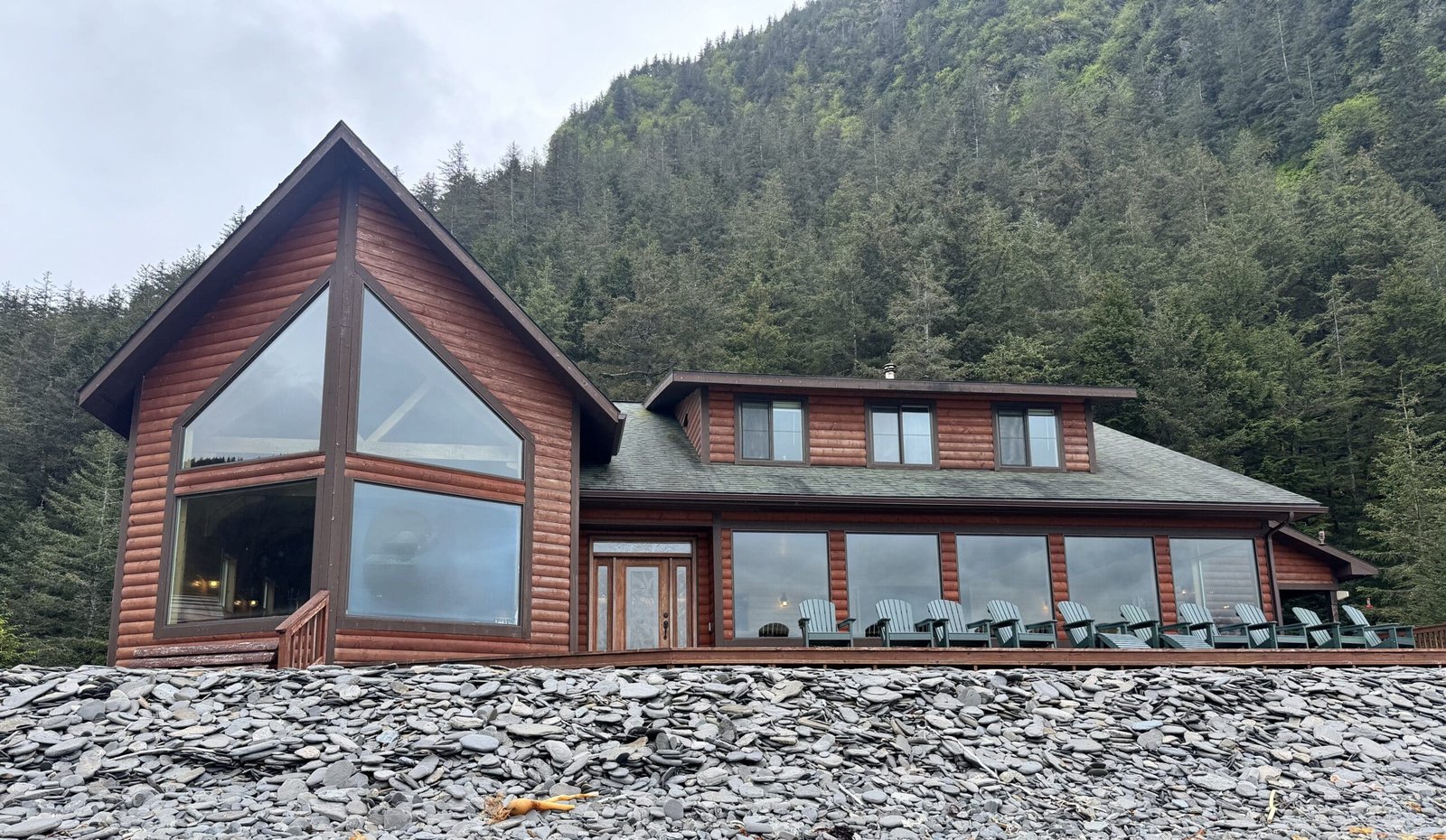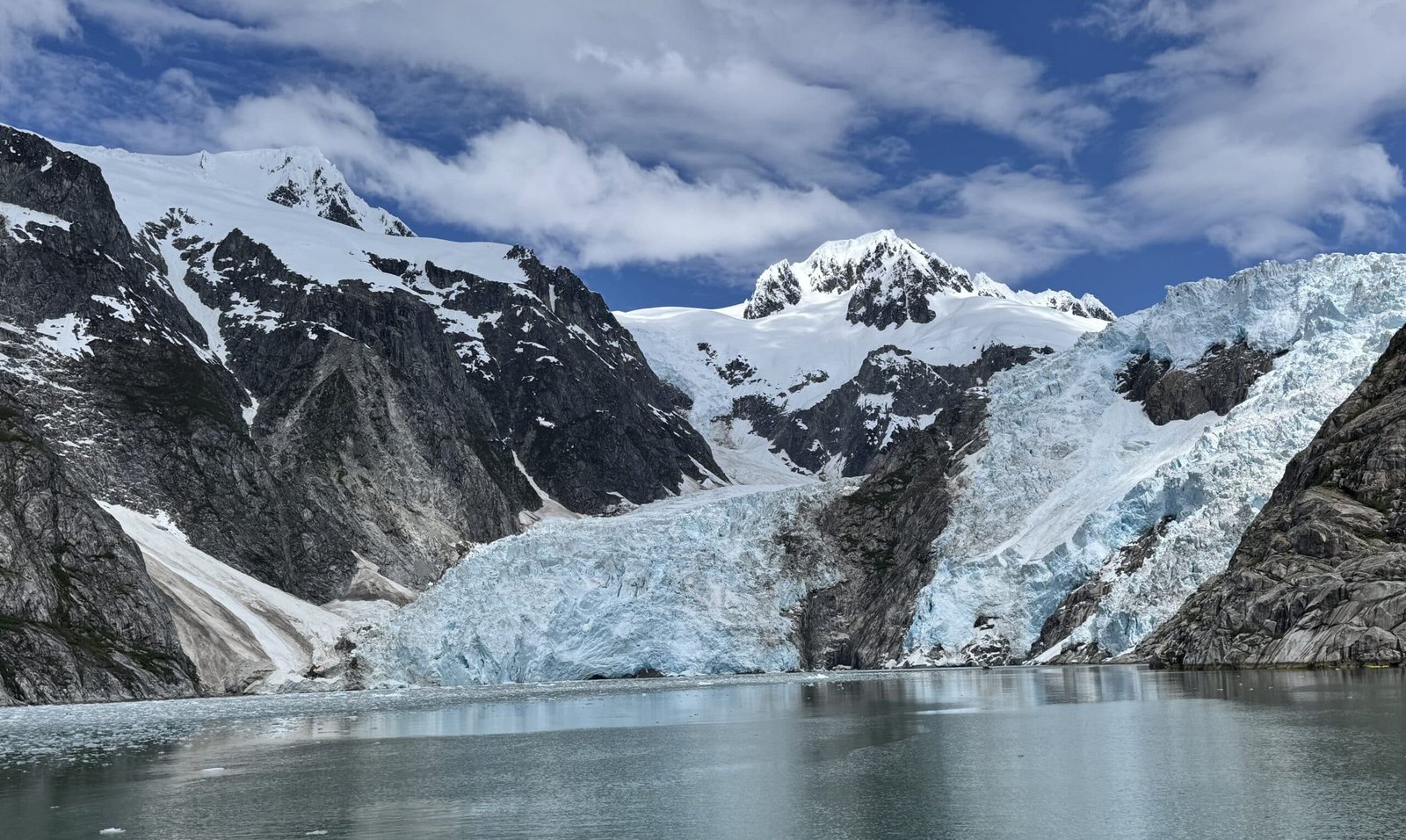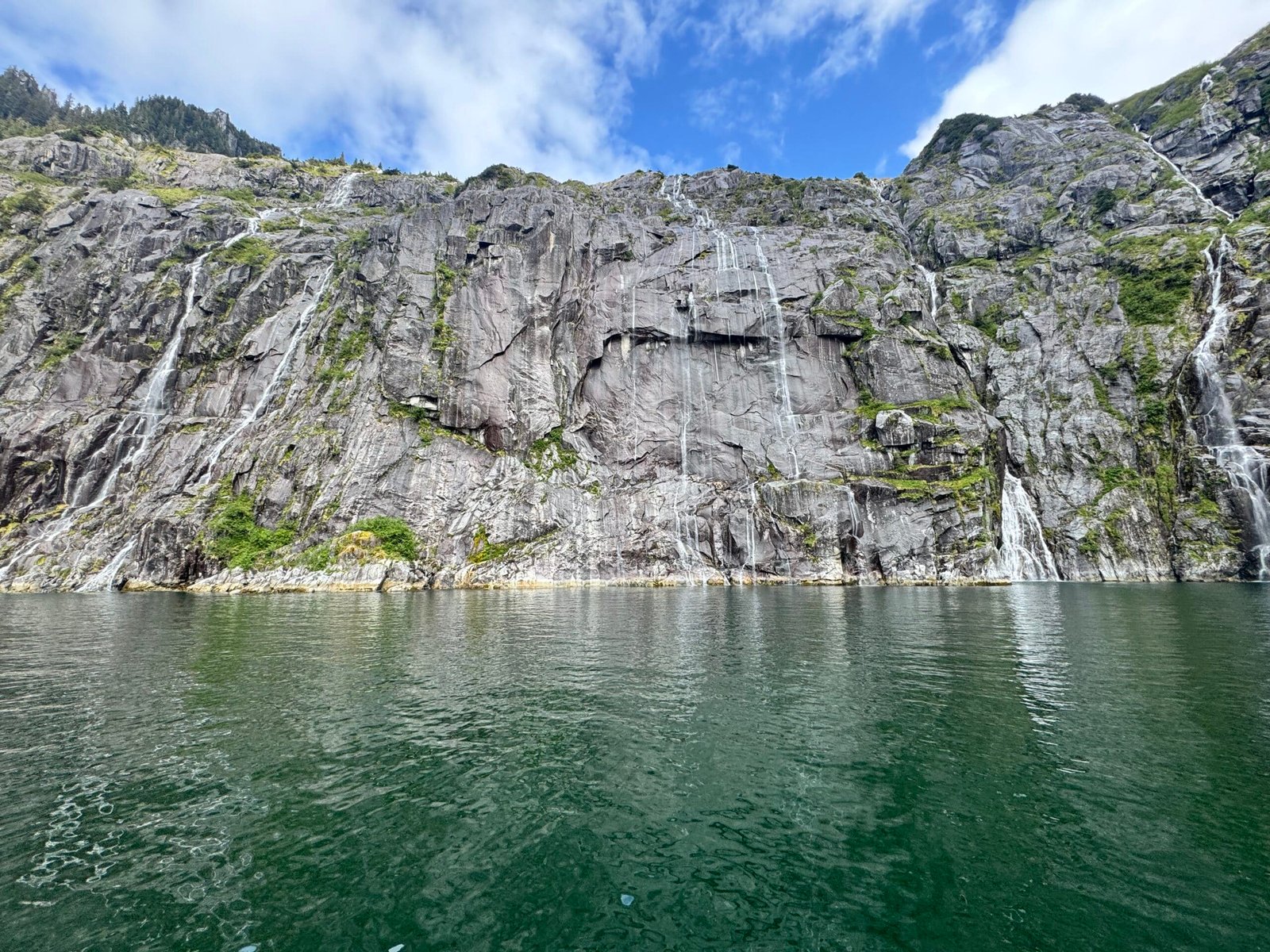The only way to reach Kenai Fjords Wilderness Lodge is by boat. On calm June mornings, the half-hour trip from Seward crosses Resurrection Bay, past rocky outcrops where sea otters drift in kelp and puffins skim low over the water. When you step onto Fox Island’s pebbled beach, the noise of the harbor fades, replaced by the steady wash of waves and the occasional cry of a gull.
It feels far removed from the crowds, but the lodge sits at the gateway to Kenai Fjords National Park, which draws between 350,000 and 400,000 visitors annually. That popularity raises a problematic question for Alaska’s remote destinations: how do you make wild places more accessible without damaging the very environments that make them worth visiting?
For Kenai Fjords Wilderness Lodge and its partner operation, Kenai Fjords Tours, the answer lies in limiting the number of visitors and embedding sustainability into nearly every decision. With space for only about 30 guests at a time, stays are short but immersive. Cabins are constructed from sustainable materials and designed to minimize energy consumption, utilizing solar power with backup propane generators. There are no televisions, phones, or electrical outlets in the rooms. A spring-fed creek supplies the water, which is purified on-site. Meals are sourced from locally grown food when possible, and waste is minimized through recycling and reduced plastic use.

Days at the lodge deepen visitors’ connection to the surrounding environment. Guided sea kayaking trips take guests into sheltered coves, where a guide explains the tides, points out nesting seabirds, and identifies the marine mammals that surface nearby. A resident naturalist hosts daily programs inside the lodge on local ecosystems and wildlife and is available for beach walks or short hikes for those who want to learn more about the island’s natural history.
That same philosophy carries over to the tour boats that ferry guests deeper into the bay and along the park’s rugged coastline. Crews recycle motor oil, dispose of waste at the dock, and use biodegradable or reusable alternatives to single-use plastics. New, fuel-efficient, and low-emission engines reduce the carbon footprint, while partnerships with the Alaska SeaLife Center and the Whale SENSE program help fund marine research and promote responsible wildlife viewing. On the water, captains maintain a respectful distance from humpbacks, orcas, and harbor seals, allowing passengers to observe without disturbing the animals’ behavior.
Alaska’s Tourism Boom Comes With Pressure
Kenai Fjords National Park ranks among the most-visited in Alaska, according to the National Park Service, outpacing larger and more remote parks such as Wrangell-St. Elias and Gates of the Arctic. Visitation has rebounded since pandemic-era lows, drawing cruise passengers, independent travelers, and Alaskans alike.
That growth brings economic opportunities for towns like Seward, the park’s primary gateway. However, it also raises the challenge of managing increased visitor numbers in an area where glaciers, wildlife habitats, and marine environments are particularly sensitive to change.
A Landscape in Flux

In Resurrection Bay and beyond, climate change is reshaping the scenery. From the deck of the Kenai Fjords Tours vessel, passengers can see where glaciers once reached, now pulled back by years of retreat. Near Northwestern Glacier, baby harbor seals rested on floating icebergs. At the same time, the captain cut the engines, asking guests to speak in whispered voices so the animals could remain undisturbed.
The variety of wildlife here surprises even seasoned travelers, puffins, bald eagles, porpoises, sea otters, mountain goats, and multiple whale species share these waters and cliffsides. Compared to Glacier Bay National Park, where marine mammals are present but often less visible, Kenai Fjords teems with life at nearly every turn.
Balancing access and preservation
Pursuit designs its sustainability measures to minimize the human footprint in a region that thrives on its wildness. The company’s certification under Adventure Green Alaska, the state’s voluntary sustainable tourism program, signals a commitment to economic, environmental, and social standards that go beyond marketing. These measures, ranging from solar power to wildlife education, ensure that the experiences that draw visitors here today will still be possible decades from now.
The Town That Greets the Visitors
Protecting the wilderness is only part of the equation. For Seward, the nearest community, tourism is also a lifeline. One resident, chatting over coffee with his son, said he’s happiest when visitors stop in town instead of just passing through on their way to somewhere else. He has lived here all his life, watching the community grow while still retaining its small-town charm.
Most of the island’s staff members arrive from other parts of the country, seeking a change of pace and the opportunity to work in a natural environment. This is the same draw that lures many of the visitors they serve.
Beyond Kenai Fjords

What’s happening in Kenai Fjords is part of a broader conversation playing out across Alaska’s wildest landscapes: how to welcome visitors without compromising what makes these places worth visiting. In Denali National Park, bus quotas limit daily traffic along its only road, in Wrangell-St.. Elias, the largest national park in the United States, outfitters steer travelers toward self-guided, low-impact expeditions.
But Kenai Fjords’ proximity to a major cruise port makes it a unique test case. It is close enough to draw large numbers, yet still wild enough that visitors can watch Dall’s porpoises racing under the bow as a bald eagle soars overhead.
For travelers and operators alike, the hope is that scenes like this remain unchanged, serving as proof that, in the delicate balance between access and preservation, it is still possible for the wild to prevail.
Chantelle Kincy founded and created Flannels or FlipFlops. In this unique space, she combines her expertise as a writer and travel advisor to inspire wanderlust and offer practical travel insights. With countless hours of education in the travel niche, specialty certificates in cruise travel, and a passion for exploring the grandeur of National Parks, Chantelle brings a wealth of experience to her readers.

